Recent Articles
Popular Makes
Body Types
2014 Land Rover Range Rover Sport Quick Spin
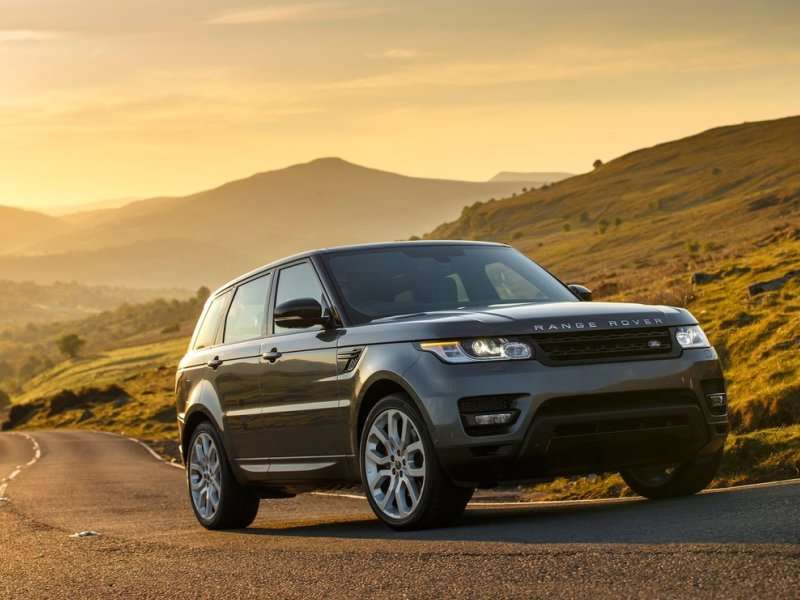
Introduced during a time when SUVs were evolving considerably beyond their original intentions, the original Range Rover Sport was Land Rover’s first attempt to marry the outstanding co-anywhere capabilities of its top Range Rover model, with the on-pavement athleticism of some of the then-new competitors.
BMW’s X5 and Porsche’s Cayenne had proved buyers in the ultra-premium segment of the SUV market would gravitate toward a product with outstanding power and handling on the street. Further, they had demonstrated for a certain segment of that demographic, offroad capability was secondary.
Of course Land Rover, being Land Rover, couldn’t very well leave off road capability behind on the pavement to go chasing after those sexy German sirens down a twisty two-lane. Thus, the original Range Rover Sport was engineered to do both. However, because it was largely based on the rugged and exceptionally robust Land Rover LR4’s steel ladder frame platform, weight was a significant issue.
Happily, the redesigned 2013 Range Rover’s new all-aluminum unibody platform shed considerable weight. The 2014 Range Rover Sport, which shares that model’s underpinnings benefits in a tremendous fashion from the newfound lightness everywhere that counts—performance, handling, and fuel economy.
2014 Land Rover Range Rover Sport Quick Spin: Features and Options
Within the Range Rover Sport lineup there are two models, each of which is available in one of two states of trim. The base model Range Rover Sport SE is fitted with a supercharged 3.0-liter V6 engine capable of producing 340 horsepower and 332 ft-lbs of torque. The Range Rover Sport Supercharged gets a 5.0-liter V8 engine also fitted (as its name implies) with a supercharger. This powerplant whirls out 510 horsepower and 461 ft-lbs of torque.
Yes, both models get supercharged engines, though only one of them touts it with a badge on its rump. Both models also, as you’d expect from Land Rover, use fulltime four-wheel drive. They are also equipped with all sorts of devices to improve performance and response on a variety of surfaces. An eight-speed automatic transmission funnels engine output to the wheels.
With pricing starting at $63,495 for the “basic” Range Rover Sport SE model, you expect these vehicles to come luxuriously equipped and Land Rover does not disappoint in that regard. Option packages are designated HSE and Autobiography. The base V6 model is designated SE, while the $79,995 base V8 model is designated “Supercharged”. The $68,495 optional V6 package uses the HSE designator, while the $93,295 upmarket V8 model is referred to as the 2014 Range Rover Sport Autobiography.
The 2014 Range Rover Sport SE standard feature set includes automatic xenon headlights, a quartet of 19-inch alloy wheels, power folding exterior mirrors, and sonar-based front and rear parking sensors. The front seats are power adjustable 14 ways and feature memory settings. The steering wheel is also power adjustable—for tilt and telescope., while the dual zone climate control system is automatic. Other features include an eight-inch touch-screen display, Bluetooth telephony and audio streaming, along with an eight-speaker audio system featuring a ten-disc CD changer and iPod integration.
To get to HSE, Land Rover adds foglights, a panoramic sunroof, and heated front seats featuring upgraded leather. With the V8 Supercharged package you get all of the above plus low range gearing and a limited slip differential for the four-wheel drive system, along with adaptive damping, roll stabilization, and paddle shifters for the eight-speed automatic transmission.
The full-blown Autobiography package for the V8 features everything listed so far, plus a set of 21-inch wheels, smart headlights, ventilation for the front seats, heat for the steering wheel and rear seats, triple zone automatic climate control, and a cooler in the front center console. The tech package includes surround view cameras, blind-spot monitoring, rear cross traffic alerts, an auto dimming feature for the exterior rear-view mirrors, and an upgraded 19-speaker audio system by Meridian.
And yes, various aspects of the Autobiography package can be fitted to lesser models as optional gear. A third-row seat can be had with all trim levels and packages, as can a set of 22s, smart cruise with full braking capability, rear seat entertainment, and a tow package.
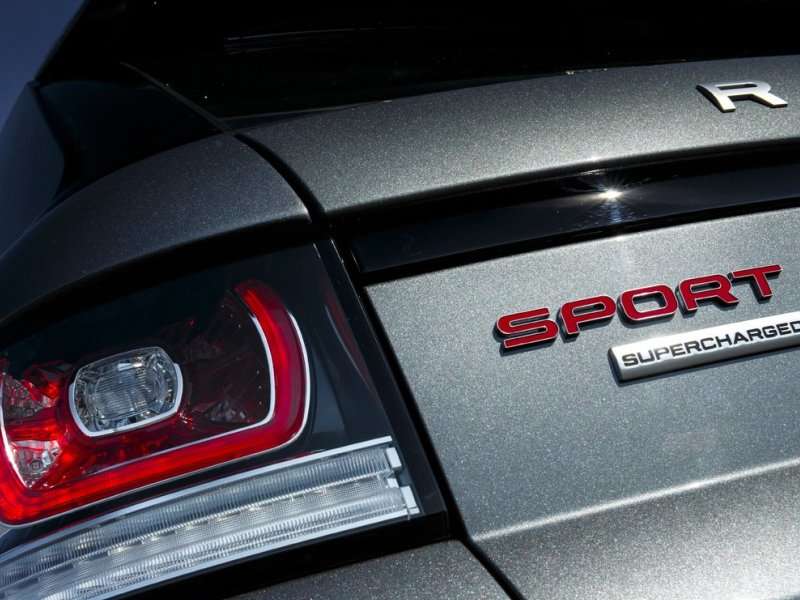
2014 Land Rover Range Rover Sport Quick Spin: Design and Materials
On the appearance front, the 2014 Range Rover Sport immediately puts its predecessor on the trailer. Where the previous version of the Rover looked like a chopped and channeled version of the standard Range Rover, this one has a more distinct appearance, somewhat reminiscent of the new Range Rove Evoque. Sleek and (dare we say?) sporty in appearance, the new model actually looks fast—which it is.
The interior treatment is considerably better too. While we got what they were trying to achieve in the previous model with its cockpit-style compartmentalization of the front seats, it felt kind of cramped and claustrophobic. The color palette was somewhat limited as well. Now don’t misunderstand us, we aren’t saying it sucked tailpipe, we’re just saying there was considerable headroom for improvement.
And, they took full advantage of it with the new 2014 Range Rover Sport. Even the base models have a richness of appearance, wholly befitting one of England’s top luxury marques. The cockpit feel is still there, however it’s done with a much more spacious and airy feel. The sculpted sport seats are definitely the centerpiece of the interior, though the thick-rimmed steering wheel and the chiseled center console compliment them quite nicely.
Plush is the watchword here, with a sporting edge wholly in keeping with the dynamic characteristics of the sportiest Range Rover model. Much of the plastic found in the original Range Rover Sport has been replaced by soft-touch surfaces for key touch points around the cabin. Extremely fine leather, genuine wood, and a generous offering of aluminum trim all blend together in an understated, yet opulent fashion.
In other words, it’s nice.
Really, really nice.
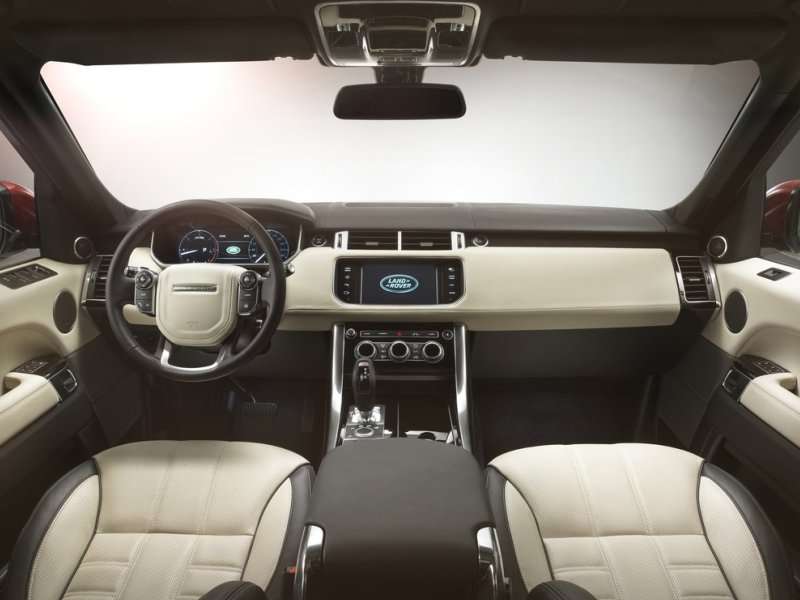
2014 Land Rover Range Rover Sport Quick Spin: Comfort and Controls
Over a day spent driving the 2014 Range Rover Sport models we found them to possess comfort in considerable abundance. The seats are exceptionally supportive, and their broad range of adjustability makes tailoring them to practically every physique readily accomplished.
Enhancing the aggressive feel of the Range Rover Sport is the fact you sit lower in the passenger compartment than you do in the standard Range Rover. This also makes the SUV more comfortable when you’re asking it to perform like a sports sedan.
As for the controls, large knobs dominate the interior, making them easy to grasp and readily discernable as far as function is concerned. They’re even easy to use with gloves. There are place where old meets new, in a not so flattering a manner. The new instrument panel for example, doesn’t quite square with the old touchscreen interface, but that’s something we’re sure will get changed in time.
One real benefit of the touchscreen though is the way it enabled the interior designers to clear out a lot of the buttons and switches formerly populating the interior for a cleaner, more modern appearance.
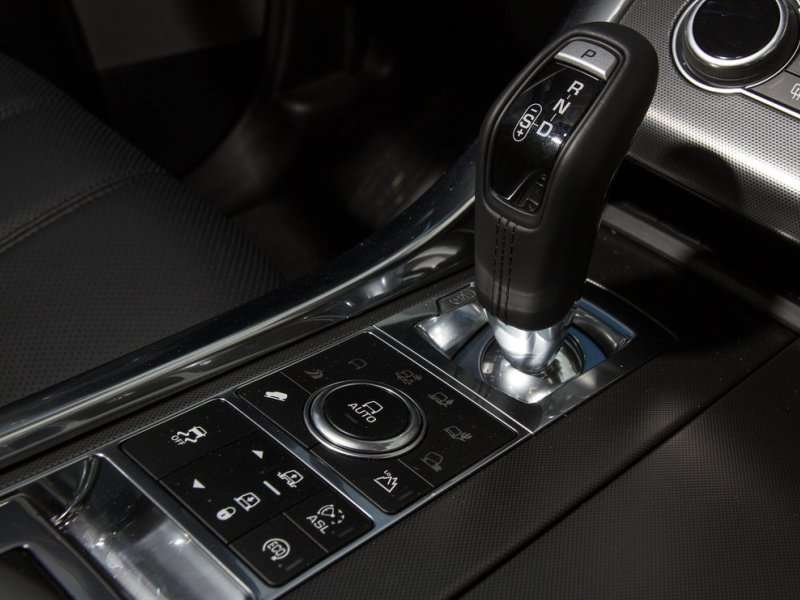
2014 Land Rover Range Rover Sport Quick Spin: Safety
A full compliment of the latest safety features are fitted to the 2014 Range Rover Sport. ABS, traction control, stability control, a full array of airbags, front and rear proximity sensors, and a rearview camera start things off. To those features are added Lane Departure Warning, Traffic Sign Recognition, Park Assist, smart headlights, smart cruise control, blind spot monitoring, closing vehicle sensors, reverse traffic detection, a surround camera system, and adaptive headlamps which follow the movements of the steering wheel.
Reverse Traffic Detectionuses radar sensors in the rear of the vehicle to warn about potential collisions during reversing maneuvers. The system is active when reverse gear is selected and can detect a vehicle approaching from either side, alerting the driver to a potential collision.
The Closing Vehicle Sensingsystem scans a zone much farther behind the vehicle to detect quickly closing vehicles, which could strike the Range Rover form the rear, or cause a threat during a lane change maneuver. Blind spot warning lights in the exterior rear view mirror flash to provide an alert to the driver if a rear end collision seems imminent.
Park Assist uses the electric power steering system to enable the Range Rover Sport to park itself (both parallel and perpendicularly), as well as take itself out of a parallel parking space.
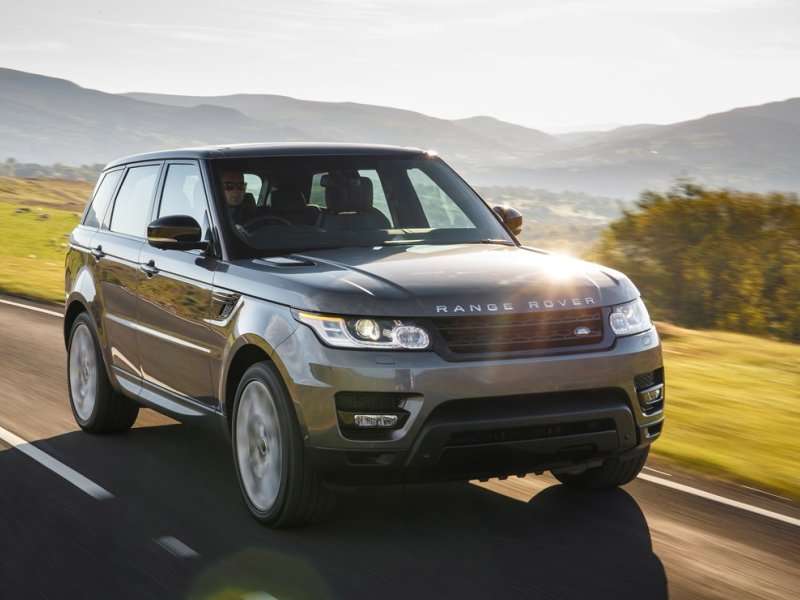
2014 Land Rover Range Rover Sport Quick Spin: Driving Impressions
On the road, the Range Rover Sport goes like a vehicle half its size. The V6 powered model is light on its feet, remarkably agile and exhibits very little understeer. You really can go like a sports sedan in it. Other than the elevated ride height, you feel like you’re driving a really good, well-behaved car, with outstanding agility and power.
Speaking of which, the V6 provides more than adequate grunt to get the party started, but if you really want to get down, the V8 will clown pretty much anything you pull up beside. Powerful as all get out, with a delightful V8 rumble, the supercharged 5.0-liter gets the job done—huge. It does add some weight to the nose of the Range Rover Sport, so you give up a bit of agility to the V6 powered model. For this reason, the V6 feels a bit more adroit in the twisties, but for flat out running the V8 is a serious contender.
Land Rover quotes zero to 60 at just under seven seconds for the V6 with fuel economy of 17 in the city, 23 on the highway and 19 combined. The V8 is quoted at five seconds to 60 with fuel economy of 14 in the city, 19 on the highway, and 16 combined.
Off road?
Well, it’s a Land Rover first and foremost, so you got the gear to take on any terrain without a shred of fear. The Terrain Response System sets the Range Rover up to deal with whatever surface you come across with very little effort on your part. The trick is knowing how to set it up. If you’re going to be doing a lot of off roading with the Range Rover, we suggest enrolling in one of the Land Rover Experience Driving Schools so you can take full advantage of all of the exceptional capabilities built into the 2014 Range Rover Sport.
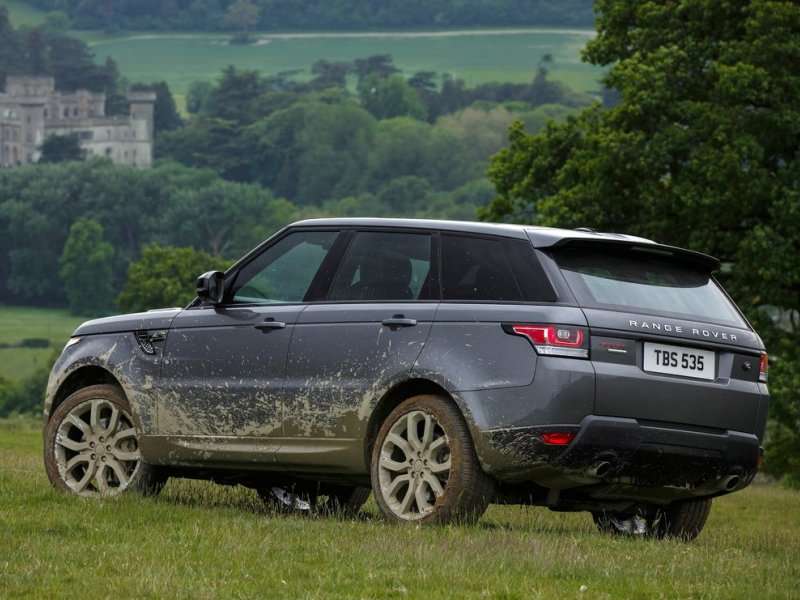
2014 Land Rover Range Rover Sport Quick Spin: Final Thoughts
The idea of a vehicle the size of the Range Rover Sport doing the things it can do dynamically is almost science fiction. The fact of the matter is though; this is one extremely capable vehicle, both on the road and off. It is also an extremely costly and fuel-thirsty vehicle.
Of course, if your income will support it, and you like the ride, then hey, nobody’s stopping you. We won’t blame you one bit for choosing to avail yourself of its charms. Land Rover has done much to make the 2014 Range Rover Sport an exceptionally enticing proposition.
The interior is remarkably plush, the exterior styling is the sleekest we’ve ever seen on a full-sixe Range Rover model, and the prestige factor is absolutely assured. Nothing else is a Range Rover. When you roll up in one, people know you’re cranking out serious dough, or you got access to somebody who is (as is our case).
Thing is, there are a number of other very worthy competitors out there, BMW X5, Porsche Cayenne, Mercedes-Benz ML63 AMG…and to a lesser extent, the Jeep Grand Cherokee SRT8 does a lot of what the Land Rover on the road at a lower price point (but yeah, we know, it’s a lowly Jeep—never minding the fact the Range Rover evolved out of the Jeep in the first place).
Long story short, one of the reasons Land Rover worked so hard to bring the Range Rover up is because there is no shortage of alternatives out there in this space. But for a certain class of drivers, those for whom only the most prestigious will do, it’s Range Rover or nothing at all. Happily, this new one doesn’t force them to compromise anything at all.
